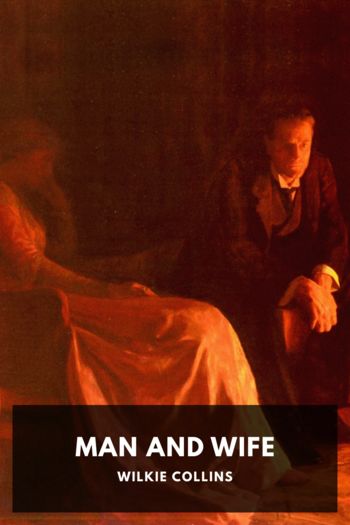Living Like Ed Ed Jr. (best ereader for pdf and epub txt) 📖

- Author: Ed Jr.
Book online «Living Like Ed Ed Jr. (best ereader for pdf and epub txt) 📖». Author Ed Jr.
Creating Carbon Dioxide
In most cases, when you generate power at a power plant, you put out carbon dioxide, or CO2. These emissions come out of the power plant’s smoke-stacks as a result of the combustion process—from burning coal or crude oil or natural gas. Power plants also produce sulfur dioxide, oxides of nitrogen, and mercury emissions, but carbon dioxide is the thing people focus on most because it’s considered a primary cause of global warming.
Obviously, the way your utility company generates power has a profound effect on how much CO2 it emits. According to the EPA, for each megawatt-hour of electricity that a utility company produces, it creates
• 2,988 pounds of CO2 by burning municipal solid waste
• 2,249 pounds of CO2 by burning coal
• 1,672 pounds of CO2 by burning oil
• 1,135 pounds of CO2 by burning natural gas
• 0 pounds of CO2 by using water to create hydroelectric power
• 0 pounds of CO2 by using wind
• 0 pounds of CO2 by using solar power
• 0 pounds of CO2 by using nuclear power
On a state-by-state level, Texas leads the way in CO2 emissions from power generation, putting out more than 280 million tons of carbon dioxide each year. It’s no surprise that Texas generates most of its power by burning coal and natural gas.
After Texas comes Florida, which produces 145 million tons of CO2 emissions from power generation annually, thanks to an emphasis on burning coal, crude oil, and natural gas. Then comes Indiana, at 133 million tons, with coal used to create 94.7 percent of the state’s power.
California is way down the list, producing only 67 million tons of CO2 emissions a year—if you can use the word only.
Vermont gets the cleanest ranking in terms of CO2. It produces just shy of 19,000 tons of carbon dioxide emissions from power generation. That’s because most of the power generated in Vermont is nuclear—70.5 percent—and another 21.7 percent is hydroelectric. Only 0.4 percent of all the power generated in that state comes from the burning of fossil fuels, and then we’re talking oil and gas—not coal. So it’s a really clean state in terms of CO2 emissions, though nuclear power certainly has its drawbacks, which we’ll get into later.
The Grid
Now, how does electricity get from a power plant to your home or workplace? The utility company sends that electricity out over a network of transmission and distribution lines, better known as the grid.
Transmission lines are those large, high-voltage power lines you see, usually supported by tall metal towers. They move electricity from the power plant to a local substation.
From the substation—or from a transformer—the power then travels over smaller, lower-voltage distribution lines. These are the power lines you see overhead along city streets, supported by what we usually think of as telephone poles. If you don’t see those lines overhead, your city probably has its distribution lines underground.
The Price of Electricity
Once you get your electricity, of course you have to pay for it. For home use, electricity is measured in kilowatt-hours. Your electric meter tracks the number of kilowatt-hours you use, then the utility company charges you a price per kilowatt-hour.
We’ve seen a rapid rise in the price of electricity over the last few years. The curve has started to go up and up and up, and now we’re starting to see a real spike. And over time, I think the price of electricity is only going to continue going up.
The price you’ll actually pay for electricity varies pretty dramatically by state and by city. In a place like Los Angeles, the LADWP charges 7¢ a kilowatt-hour. Overall, the rate for California averages 12.36¢ per kilowatt-hour.
Hawaii has the highest rate in the nation, averaging 19.05¢ per kilowatt-hour. Electricity is very expensive there because you have to bring in a lot of the fuel from off the islands.
If you go to a place like Idaho, where they’ve got hydroelectric plants from the 1930s that have well since been paid off, they’re charging an average of 4.75¢ a kilowatt-hour. It’s the cheapest in the country.
Capital investments to build new power plants impact electricity prices, too. And prices can also fluctuate on a seasonal basis, going up in the summertime, for instance, when demand and usage are much higher.
High Peak, Low Peak, and Off-Peak
There’s another variable that can affect what you pay for your electricity: the time of day. Now, most people pay a flat rate for electricity, no matter what time of day or night they use it. They pay the same price, no matter what.
But one way you can save some money on your electric bill, if you can control when you use power, is by doing what I did: I had a time-of-use meter installed at my house. Most electric meters just keep track of how many kilowatt-hours you use. A time-of-use meter keeps track of when you use that power, too.
It has three tiers for electricity:
HIGH PEAK. Peak power is very expensive. That’s power that is used from 1 P.M. to 5 P.M., when the drain on the grid is heaviest. That’s when you may experience brownouts and when power stations tend to go down. People have the air conditioner on. Everybody’s in their office with their laser printer on. People are at home watching soap operas on their plasma TVs.
Any power company will tell you that one to five is the period of highest activity, so they charge you the most for power during peak hours if you have a time-of-use meter. Peak power hours are when utility companies have to buy more power for the grid. They buy power from Canada. They buy it from Utah. They buy and sell it on an exchange. And it costs them more when they have to buy this extra power, so they charge you more. High peak is very expensive. That’s like 14¢ a kilowatt-hour if you use power then, ac-cording to the LADWP.





Comments (0)